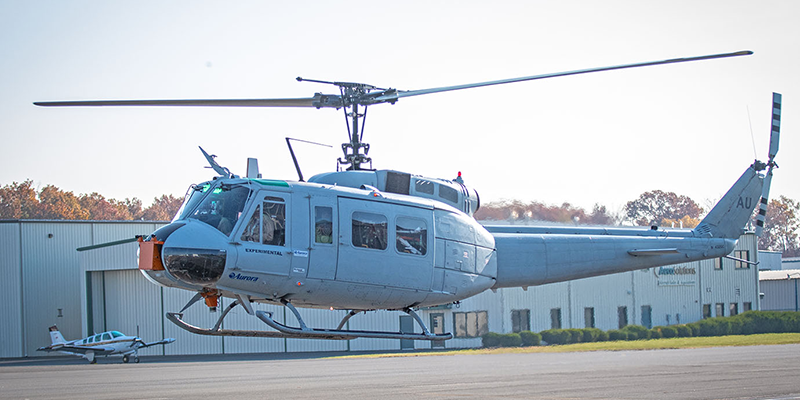Recently, Aurora demonstrated two important parts of an effective and cost-efficient development process for autonomous behaviors and other new aircraft technologies: hardware-in-the-loop simulation and flight testing with a safety pilot.
Aurora’s hardware-in-the-loop simulator (HILSIM) enables testing of autonomous behaviors and other new technologies using exactly the same hardware and people as in a live flight test. Technologies can be tested in a low-cost but highly relevant simulation environment to discover potential issues and make refinements prior to testing in flight.
In this case, Aurora was demonstrating autonomous behaviors: take-off, waypoint navigation, and landing. In the past, Aurora has also used the HILSIM to test new hardware, like mission computers and helmet displays, as well as for other pre-flight testing in autonomy, such as detect and avoid and clear landing area identification.
For both its HILSIM and flight test, Aurora used a 1970’s UH-1H military helicopter. The HILSIM adds a computer server simulating the aircraft dynamics, which connects directly to the UH-1H, and digital displays showing the simulated flight environment. In this case, we have chosen to show a pilot view and a chase view. The simulation can even model terrain from the actual take-off and landing areas.
The mission command control utility (MCCU) is in the rear passenger area of the UH-1H, and it is used to load and initiate the mission for either the simulation or the real flight. The MCCU provides insight to the autonomous system’s view and decision-making process. It offers 3D and 2D mapping of the mission path, as well as no-fly zones, safe air volumes, and more. In the cockpit, the pilot display includes the aircraft attitude indicator (pitch and roll), speed, heading, altitude, and flight path guidance. While running a simulation, the flight controls move but the rotors do not spin.
After several successful runs in the HILSIM, the team is ready for flight test. The aircraft, pilot, engineer, and autonomy are exactly as they were during simulation. The simulation computer server is disconnected, and the aircraft is prepped for flight.
After completing a pre-flight checklist, the pilot engages the auto-pilot system, and the engineer launches the mission from the MCCU, just as they did during simulation, only this time the UH-1 takes-off and routes to its assigned destination. The on-board safety pilot does not touch the controls but keeps his hands close so that he can immediately take over if necessary.
Testing autonomous behaviors using standard aircraft and an on-board safety pilot is another way to minimize costs. The development team can avoid the expenses and logistical challenges of testing in closed airspace or a dedicated facility. Centaur, Aurora’s optionally piloted aircraft, offers similar capability to test autonomous behaviors in the national airspace with an on-board safety pilot.
Testing is critical to the development of any new product or technology. Because Aurora uses easily accessible, cost-efficient methods for simulation and flight testing, the company can execute the kind of rapid develop-test cycles that fuel successful development.
ABOUT AURORA FLIGHT SCIENCES
Aurora Flight Sciences, a Boeing Company, advances the future of flight by developing and applying innovations across aircraft configurations, autonomous systems, propulsion technologies, and manufacturing processes. With a passionate and agile team, Aurora delivers solutions to its customers’ toughest challenges while meeting high standards of safety and quality. Learn more at www.aurora.aero
# # #
Contact:
communications@aurora.aero


